A Novel Dental Caries Model Replacing, Refining, and Reducing Animal Sacrifice
Abstract
:1. Introduction
2. Materials and Methods
2.1. Ethics Approval
2.2. Bacterial Strains and Culture Conditions
2.3. Extracted Jaws Preparation
2.4. Saliva Sterilization
2.5. Caries-Promoting Environment
2.6. Photographic Depiction
2.7. Carious Lesions Micro-Computed Tomography (ΜCT) Evaluation
2.8. Viable Count Evaluation
2.9. Caries Scoring Using a Scoring Method over Hemi-Sectioned Molars
2.10. Statistical Analysis
2.11. In Vivo Dental Caries Promotion
2.11.1. Mice
2.11.2. Bacterial Infection
2.11.3. Bacterial Outgrowth Evaluation and Carious Lesions Assessment
3. Results
3.1. Assessment of Caries Lesions in Extracted—Jaws from Dissected Healthy Mice
3.1.1. Clinical Evaluation
3.1.2. Quantification of Demineralization
3.1.3. Bacterial Outgrowth Evaluation
3.1.4. Caries Scoring over Hemi-Sectioned Molars
3.2. Assessment of Caries Lesions in Jaws from Experimental In Vivo Caries Model in Mice
3.2.1. Clinical Evaluation
3.2.2. Quantification of Demineralization
3.2.3. S. Mutans Dominates Oral Habitat after Infection
4. Discussion
5. Conclusions
Author Contributions
Funding
Institutional Review Board Statement
Informed Consent Statement
Acknowledgments
Conflicts of Interest
References
- Featherstone, J.D. Modeling the caries-inhibitory effects of dental materials. Dent. Mater. 1996, 12, 194–197. [Google Scholar] [CrossRef]
- Beighton, D. The complex oral microflora of high-risk individuals and groups and its role in the caries process. Community Dent. Oral Epidemiol. 2005, 33, 248–255. [Google Scholar] [CrossRef] [PubMed]
- Wolff, D.; Frese, C.; Maier-Kraus, T.; Krueger, T.; Wolff, B. Bacterial biofilm composition in caries and caries-free subjects. Caries Res. 2013, 47, 69–77. [Google Scholar] [CrossRef]
- Choi, E.J.; Lee, S.H.; Kim, Y.J. Quantitative real-time polymerase chain reaction for Streptococcus mutans and Streptococcus sobrinus in dental plaque samples and its association with early childhood caries. Int. J. Paediatr. Dent. 2009, 19, 141–147. [Google Scholar] [CrossRef]
- Loesche, W.J. Role of Streptococcus mutans in human dental decay. Microbiol. Rev. 1986, 50, 353–380. [Google Scholar] [CrossRef]
- Li, F.; Wang, P.; Weir, M.D.; Fouad, A.F.; Xu, H.H. Evaluation of antibacterial and remineralizing nanocomposite and adhesive in rat tooth cavity model. Acta Biomater. 2014, 10, 2804–2813. [Google Scholar] [CrossRef] [Green Version]
- Salli, K.M.; Ouwehand, A.C. The use of in vitro model systems to study dental biofilms associated with caries: A short review. J. Oral Microbiol. 2015, 7, 26149. [Google Scholar] [CrossRef]
- Ccahuana-Vásquez, R.A.; Cury, J.A.S. mutans biofilm model to evaluate antimicrobial substances and enamel demineralization. Braz. Oral Res. 2010, 24, 135–141. [Google Scholar] [CrossRef] [Green Version]
- Giacaman, R.A.; Campos, P.; Munoz-Sandoval, C.; Castro, R.J. Cariogenic potential of commercial sweeteners in an experimental biofilm caries model on enamel. Arch. Oral Biol. 2013, 58, 1116–1122. [Google Scholar] [CrossRef] [PubMed]
- Velusamy, S.K.; Markowitz, K.; Fine, D.H.; Velliyagounder, K. Human lactoferrin protects against Streptococcus mutans-induced caries in mice. Oral Dis. 2016, 22, 148–154. [Google Scholar] [CrossRef]
- Bowen, W.H. Rodent model in caries research. Odontology 2013, 101, 9–14. [Google Scholar] [CrossRef]
- Culp, D.J.; Quivey, R.Q.; Bowen, W.H.; Fallon, M.A.; Pearson, S.K.; Faustoferri, R. A mouse caries model and evaluation of aqp5−/− knockout mice. Caries Res. 2005, 39, 448–454. [Google Scholar] [CrossRef]
- Keyes, P.H. Dental caries in the molar teeth of rats. I. Distribution of lesions induced by high-carbohydrate low-fat diets. J. Dent. Res. 1958, 37, 1077–1087. [Google Scholar] [CrossRef] [PubMed]
- Keyes, P.H. Dental caries in the molar teeth of rats. II. A method for diagnosing and scoring several types of lesions simultaneously. J. Dent. Res. 1958, 37, 1088–1099. [Google Scholar] [CrossRef]
- Culp, D.J.; Robinson, B.; Cash, M.N. Murine Salivary Amylase Protects Against. Front. Physiol. 2021, 12, 699104. [Google Scholar] [CrossRef]
- Culp, D.J.; Robinson, B.; Cash, M.N.; Bhattacharyya, I.; Stewart, C.; Cuadra-Saenz, G. Salivary mucin 19 glycoproteins: Innate immune functions in Streptococcus mutans-induced caries in mice and evidence for expression in human saliva. J. Biol. Chem. 2015, 290, 2993–3008. [Google Scholar] [CrossRef] [Green Version]
- Yang, H.; Bi, Y.; Shang, X.; Wang, M.; Linden, S.B.; Li, Y.; Li, Y.; Nelson, D.C.; Wei, H. Antibiofilm Activities of a Novel Chimeolysin against Streptococcus mutans under Physiological and Cariogenic Conditions. Antimicrob. Agents Chemother. 2016, 60, 7436–7443. [Google Scholar] [CrossRef] [PubMed] [Green Version]
- Doke, S.K.; Dhawale, S.C. Alternatives to animal testing: A review. Saudi Pharm. J. 2015, 23, 223–229. [Google Scholar] [CrossRef] [Green Version]
- Rai, J.; Kaushik, K. Reduction of Animal Sacrifice in Biomedical Science & Research through Alternative Design of Animal Experiments. Saudi Pharm. J. 2018, 26, 896–902. [Google Scholar]
- Kalfas, S.; Rundegren, J. Biological qualities of saliva sterilized by filtration or ethylene oxide treatment. Oral Microbiol. Immunol. 1991, 6, 182–186. [Google Scholar] [CrossRef] [PubMed]
- Goldman, E.; Reich, E.; Abramovitz, I.; Klutstein, M. Inducing Apical Periodontitis in Mice. J. Vis. Exp. 2019. [Google Scholar] [CrossRef]
- Cianetti, S.; Abraha, I.; Pagano, S.; Lupatelli, E.; Lombardo, G. Sonic and ultrasonic oscillating devices for the management of pain and dental fear in children or adolescents that require caries removal: A systematic review. BMJ Open 2018, 8, e020840. [Google Scholar] [CrossRef] [Green Version]
- Montedori, A.; Abraha, I.; Orso, M.; D’Errico, P.G.; Pagano, S.; Lombardo, G. Lasers for caries removal in deciduous and permanent teeth. Cochrane Database Syst. Rev. 2016, 9, CD010229. [Google Scholar] [CrossRef]
- Cardoso, M.; Coelho, A.; Lima, R.; Amaro, I.; Paula, A.; Marto, C.M.; Sousa, J.; Spagnuolo, G.; Marques Ferreira, M.; Carrilho, E. Efficacy and Patient’s Acceptance of Alternative Methods for Caries Removal-a Systematic Review. J. Clin. Med. 2020, 9, 3407. [Google Scholar] [CrossRef]
- Maske, T.T.; Van de Sande, F.H.; Arthur, R.A.; Huysmans, M.C.D.N.J.M.; Cenci, M.S. In vitro biofilm models to study dental caries: A systematic review. Biofouling 2017, 33, 661–675. [Google Scholar] [CrossRef]
- Sabel, N.; Robertson, A.; Nietzsche, S.; Norén, J.G. Demineralization of enamel in primary second molars related to properties of the enamel. Sci. World J. 2012, 2012, 587254. [Google Scholar] [CrossRef] [Green Version]
- Montasser, M.A.; El-Wassefy, N.A.; Taha, M. In vitro study of the potential protection of sound enamel against demineralization. Prog. Orthod. 2015, 16, 12. [Google Scholar] [CrossRef] [Green Version]
- Premaraj, T.S.; Rohani, N.; Covey, D.; Premaraj, S. In vitro evaluation of surface properties of Pro Seal((R)) and Opal((R)) Seal(TM) in preventing white spot lesions. Orthod Craniofac. Res. 2017, 20 (Suppl. 1), 134–138. [Google Scholar] [CrossRef]
- Almeida, L.F.; Marín, L.M.; Martínez-Mier, E.A.; Cury, J.A. Fluoride Dentifrice Overcomes the Lower Resistance of Fluorotic Enamel to Demineralization. Caries Res. 2019, 53, 567–575. [Google Scholar] [CrossRef]
- Caldeira, E.M.; Telles, V.; Mattos, C.T.; Nojima, M.D.C.G. Surface morphologic evaluation of orthodontic bonding systems under conditions of cariogenic challenge. Braz. Oral. Res. 2019, 33, e029. [Google Scholar] [CrossRef]
- Park, K.J.; Kroker, T.; Groß, U.; Zimmermann, O.; Krause, F.; Haak, R.; Ziebolz, D. Effectiveness of caries-preventing agents on initial carious lesions within the scope of orthodontic therapy. Korean J. Orthod. 2019, 49, 246–253. [Google Scholar] [CrossRef]
- Paulos, R.S.; Seino, P.Y.; Fukushima, K.A.; Marques, M.M.; de Almeida, F.C.S.; Ramalho, K.M.; de Freitas, P.M.; Brugnera, A.; Moreira, M.S. Effect of Nd:YAG and CO. Photomed. Laser Surg. 2017, 35, 282–286. [Google Scholar] [CrossRef]
- Luo, J.; Feng, Z.; Jiang, W.; Jiang, X.; Chen, Y.; Lv, X.; Zhang, L. Novel lactotransferrin-derived synthetic peptides suppress cariogenic bacteria. J. Oral Microbiol. 2021, 13, 1943999. [Google Scholar] [CrossRef]
- Zhang, Q.; Qin, S.; Xu, X.; Zhao, J.; Zhang, H.; Liu, Z.; Chen, W. Inhibitory Effect of Lactobacillus planetarium CCFM8724 towards Streptococcus mutans- and Candida albicans—Induced Caries in Rats. Oxid. Med. Cell Longev. 2020, 2020, 4345804. [Google Scholar] [CrossRef]
- Liang, J.; Liang, D.; Liang, Y.; He, J.; Zuo, S.; Zhao, W. Effects of a derivative of reutericin 6 and gassericin A on the biofilm of Streptococcus mutans in vitro and caries prevention in vivo. Odontology 2021, 109, 53–66. [Google Scholar] [CrossRef] [PubMed]
- Larson, R.H. Merits and modifications of scoring rat dental caries by Keyes’ method. In Proceedings of "Symposium on Animal Models in Cariology", Spl. Supp. Microbiology Abstracts; CiNii: Tokyo, Japan, 1981; pp. 195–203. [Google Scholar]
- Lazzari, V.; Tafforeau, P.; Aguilar, J.P.; Michaux, J. Topographic maps applied to comparative molar morphology: The case of murine and cricetine dental plans (Rodentia, Muroidea). Paleobiology 2016, 34, 46–64. [Google Scholar] [CrossRef]
- Hartles, R.L. Experimental dental caries in the rat. Proc. R Soc. Med. 1960, 53, 528–531. [Google Scholar] [CrossRef] [Green Version]
- Wang, K.; Wang, Y.; Wang, X.; Ren, Q.; Han, S.; Ding, L.; Li, Z.; Zhou, X.; Li, W.; Zhang, L. Comparative salivary proteomics analysis of children with and without dental caries using the iTRAQ/MRM approach. J. Transl. Med. 2018, 16, 11. [Google Scholar] [CrossRef] [Green Version]


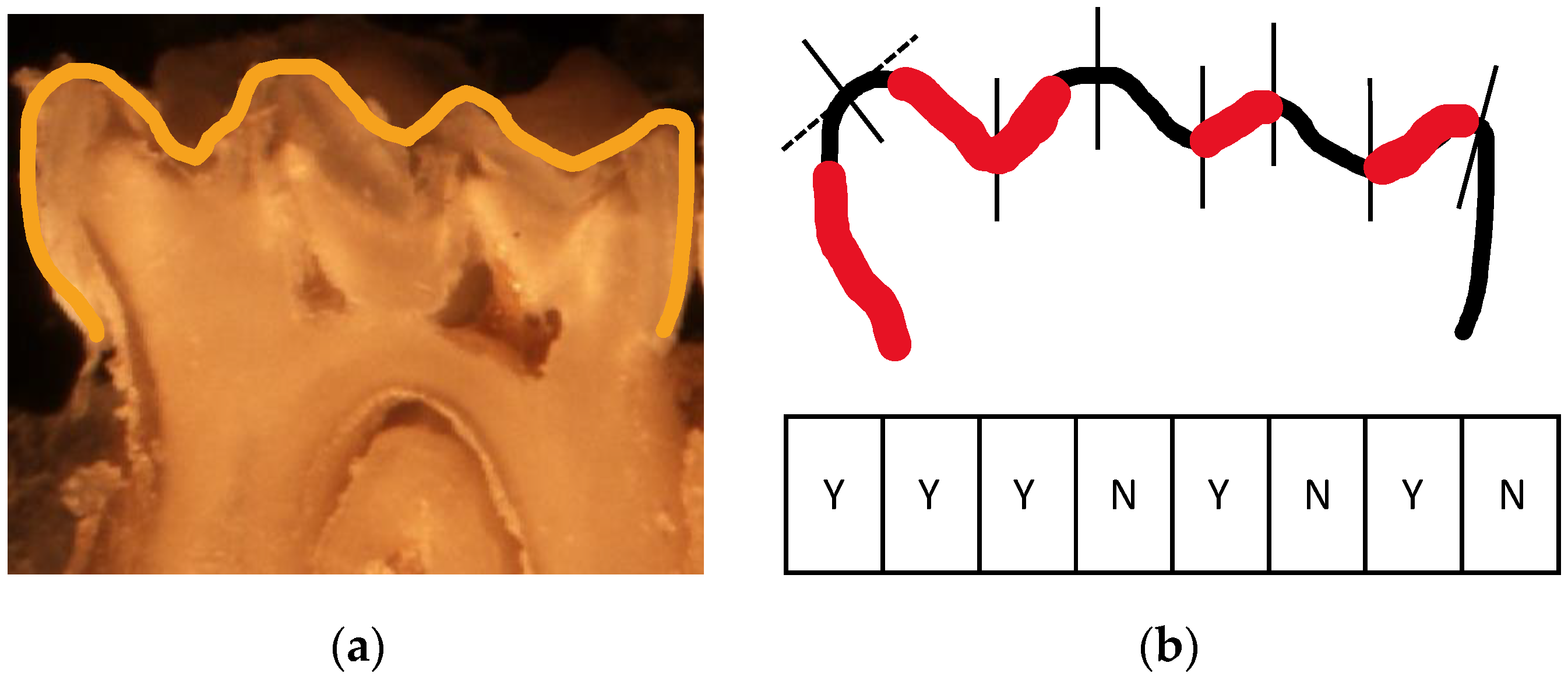

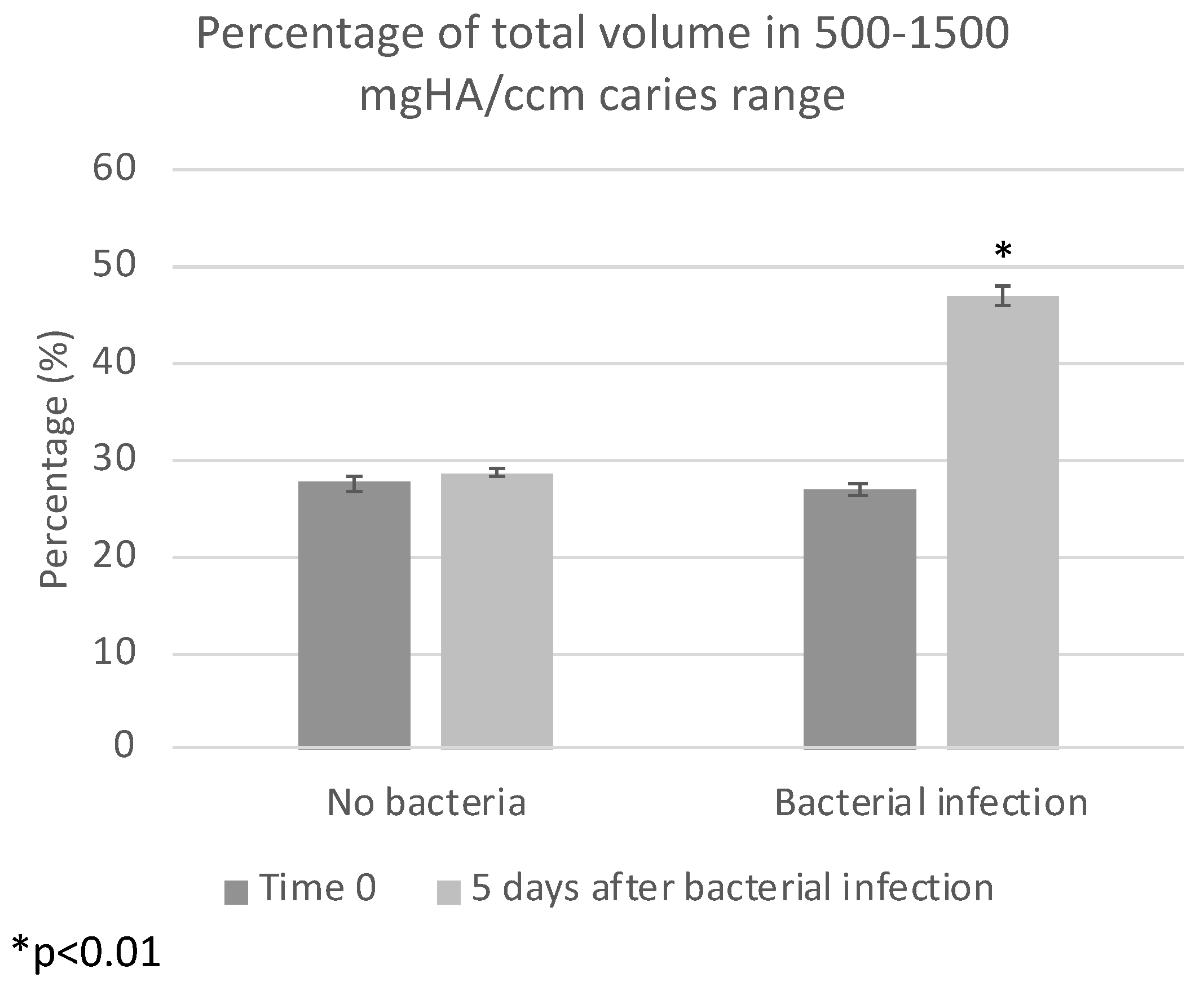

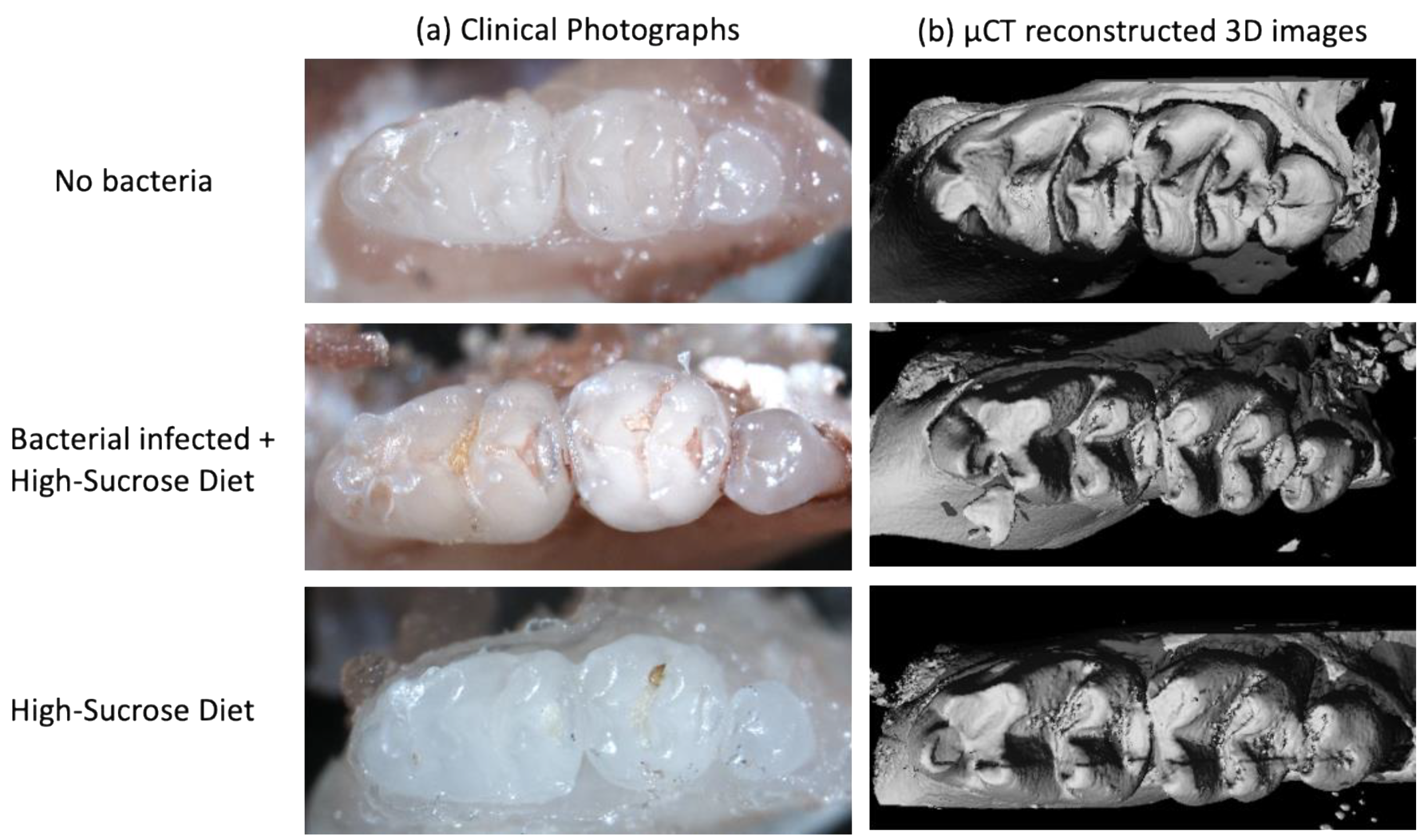
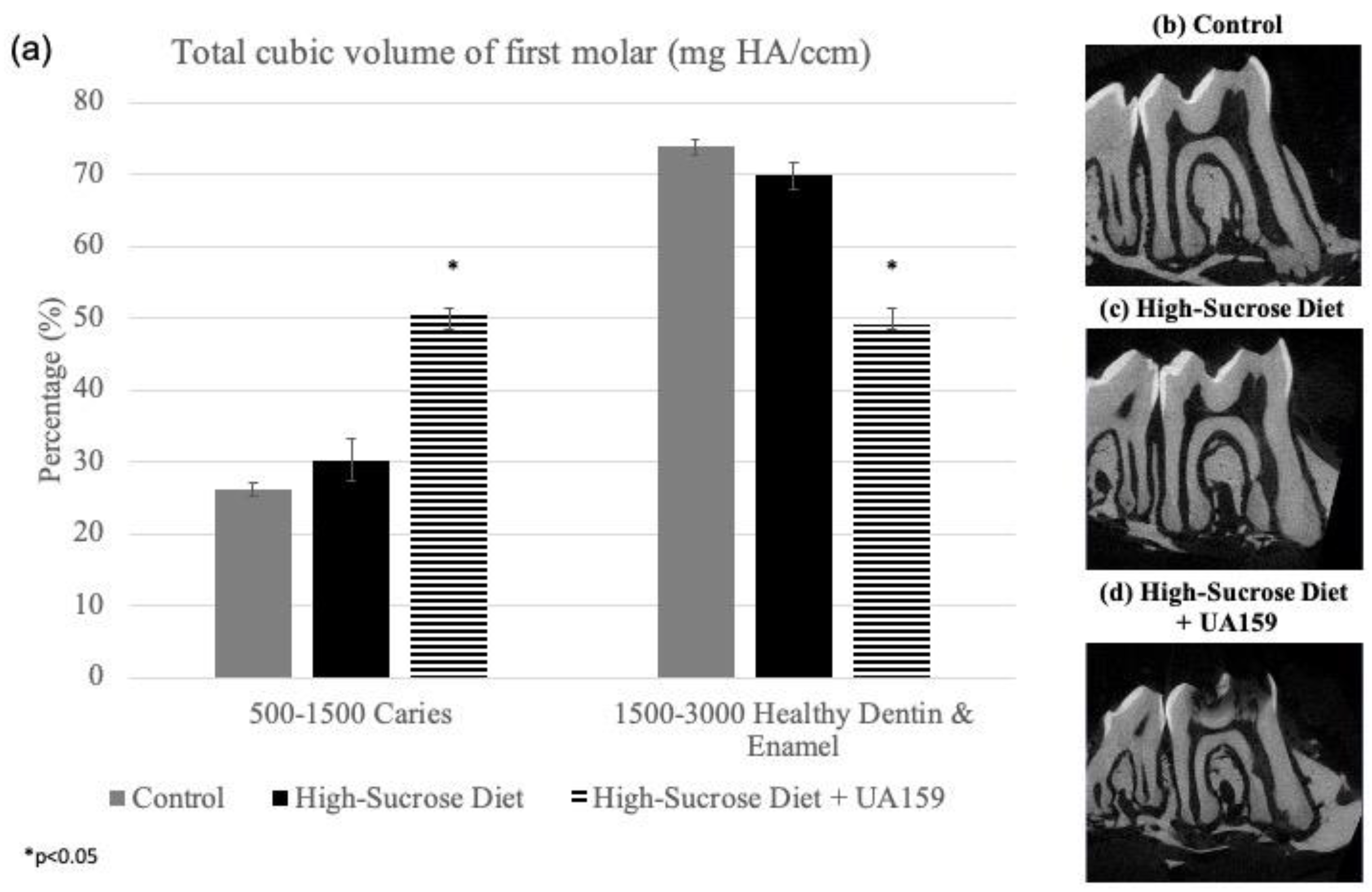
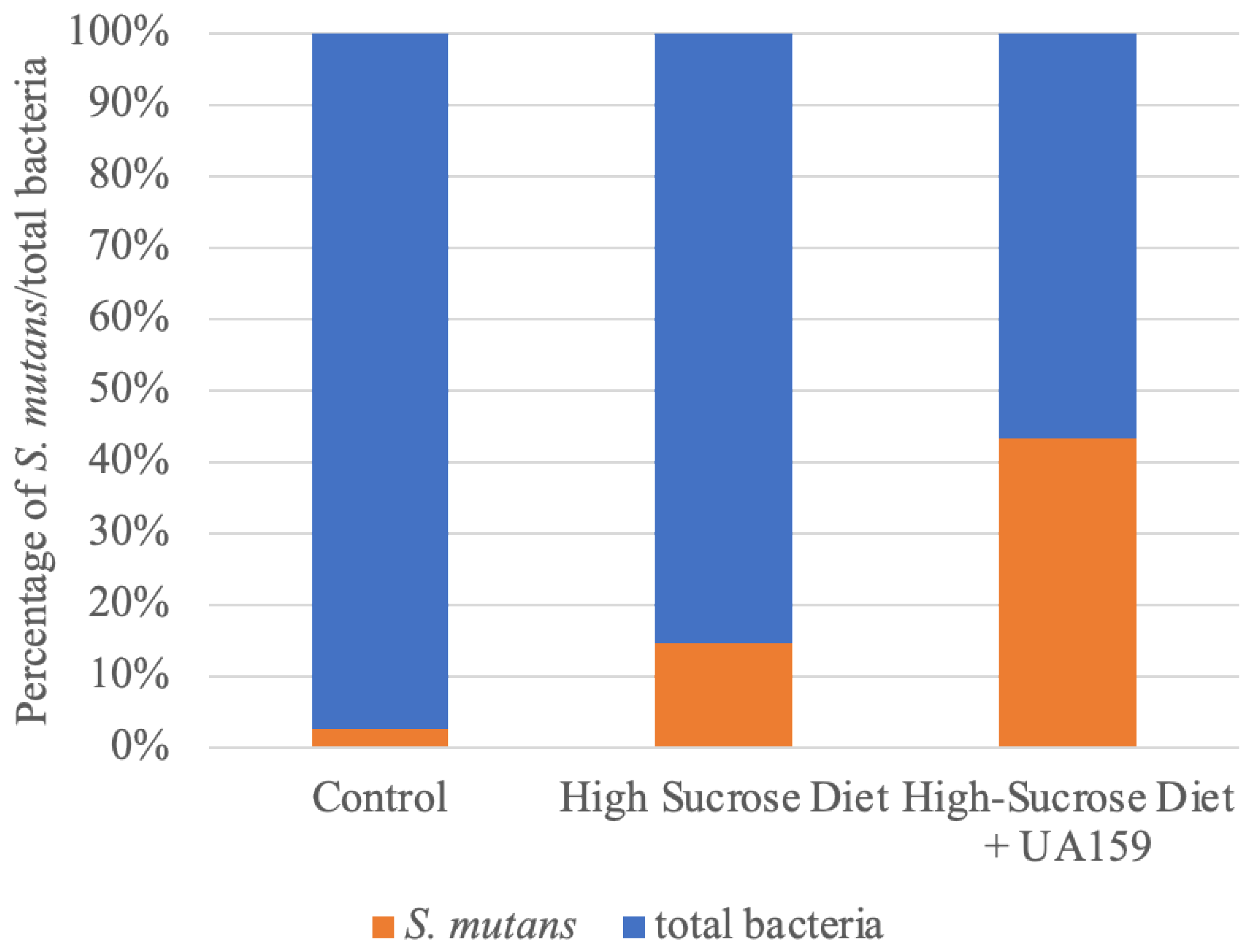
Publisher’s Note: MDPI stays neutral with regard to jurisdictional claims in published maps and institutional affiliations. |
© 2021 by the authors. Licensee MDPI, Basel, Switzerland. This article is an open access article distributed under the terms and conditions of the Creative Commons Attribution (CC BY) license (https://creativecommons.org/licenses/by/4.0/).
Share and Cite
Wolfoviz-Zilberman, A.; Houri-Haddad, Y.; Beyth, N. A Novel Dental Caries Model Replacing, Refining, and Reducing Animal Sacrifice. Appl. Sci. 2021, 11, 7141. https://doi.org/10.3390/app11157141
Wolfoviz-Zilberman A, Houri-Haddad Y, Beyth N. A Novel Dental Caries Model Replacing, Refining, and Reducing Animal Sacrifice. Applied Sciences. 2021; 11(15):7141. https://doi.org/10.3390/app11157141
Chicago/Turabian StyleWolfoviz-Zilberman, Amit, Yael Houri-Haddad, and Nurit Beyth. 2021. "A Novel Dental Caries Model Replacing, Refining, and Reducing Animal Sacrifice" Applied Sciences 11, no. 15: 7141. https://doi.org/10.3390/app11157141
APA StyleWolfoviz-Zilberman, A., Houri-Haddad, Y., & Beyth, N. (2021). A Novel Dental Caries Model Replacing, Refining, and Reducing Animal Sacrifice. Applied Sciences, 11(15), 7141. https://doi.org/10.3390/app11157141





